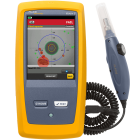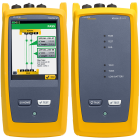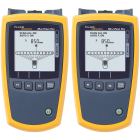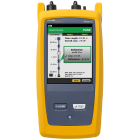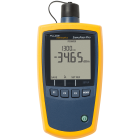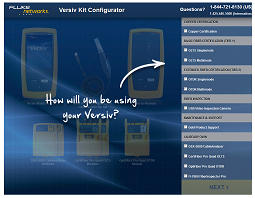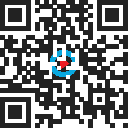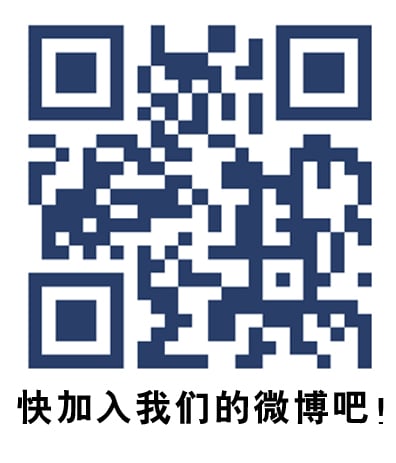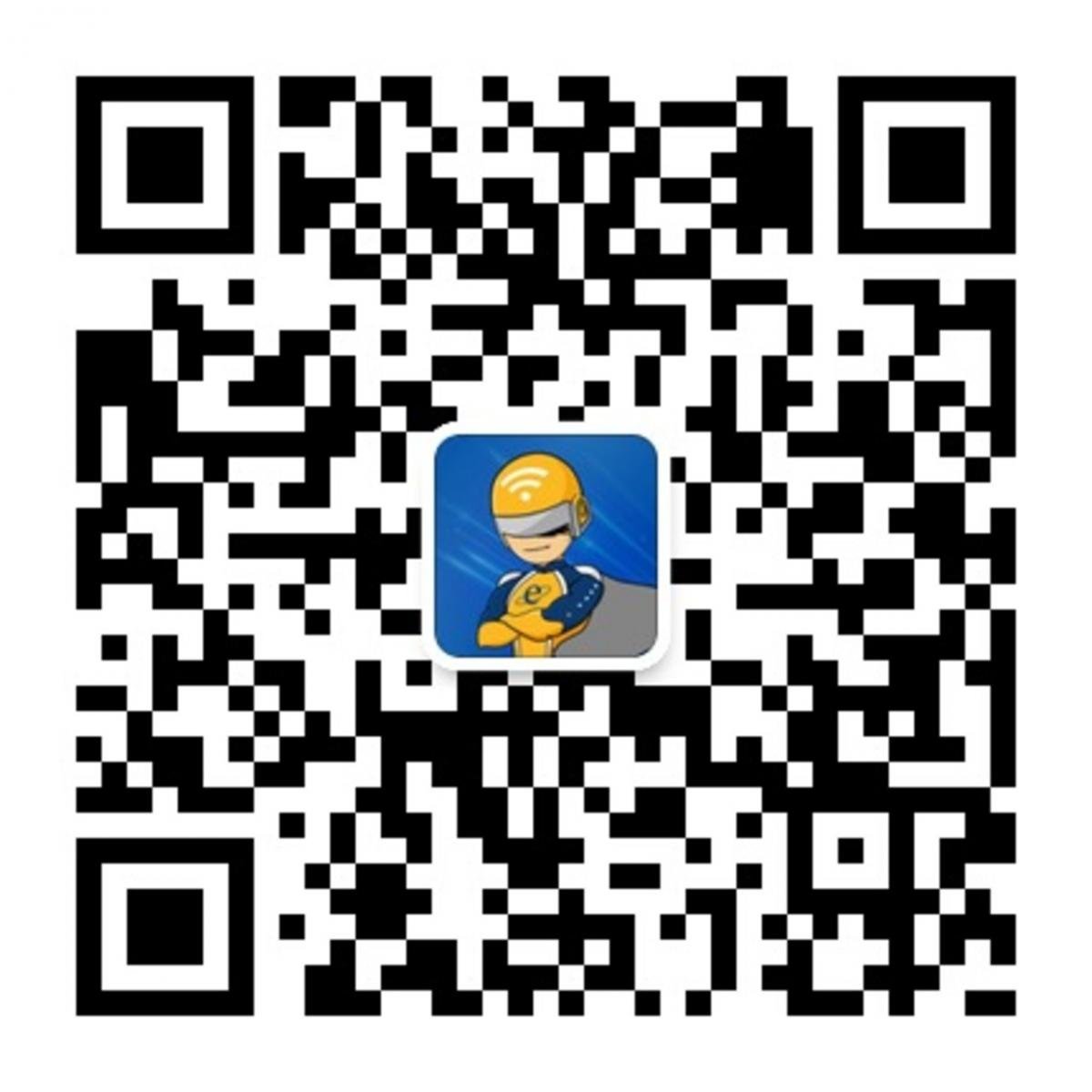광케이블 테스터, 도구 및 문제 해결 안내서
광케이블 배선은 오늘날 고성능 데이터통신 네트워크의 핵심입니다. 네트워크 속도와 대역폭 수요가 증가함에 따라 광케이블 성능 요구 사항이 더욱 엄격해졌습니다. 광케이블 테스트가 그 어느 때보다 중요해졌습니다. 광케이블 테스터의 기능은 무엇입니까? 어떤 광케이블 테스터가 적합할까요? 이 문서에서는 광섬유 테스터의 유형과 사용 방법에 대해 알아봅니다. 또한 일반적인 광케이블 네트워크 문제와 최적의 성능을 보장하기 위해 케이블 네트워크를 테스트하고 문제를 해결하는 방법에 대해서도 배우게 됩니다.
내용물
- 광케이블이란 무엇이며 왜 사용됩니까?
- 광케이블 테스트란 무엇인가요?
- 광케이블 테스트가 왜 중요합니까?
- 광케이블 테스트 방법 및 사용된 도구
- 광케이블의 광 손실 검사 및 테스트하는 방법
- Fluke Networks 도구를 사용하여 광케이블 커넥터 및 케이블을 테스트하는 방법
- 지속적 학습 유지
광케이블이란 무엇이며 왜 사용됩니까?
광케이블은 고속 및/또는 빛을 사용하여 장거리에서 데이터를 전송하기 위한 하나 이상의 광케이블을 포함하는 케이블 유형입니다. 이들 광케이블은 가장 일반적으로 유리로 만들어지며 매우 얇고, 전형적으로 인간 모발 폭의 1/10 미만이다. 광케이블은 더 빠른 데이터 전송 속도, 더 긴 전송 거리 및 전자기 간섭에 대한 내성을 포함하여 기존 구리 케이블보다 이점이 몇 가지 더 많습니다.
광케이블 테스트란 무엇인가요?
광케이블 테스트는 광케이블 배선의 성능을 확인하는 프로세스입니다. 이 프로세스에는 삽입 손실, 광 반송 손실 및 광케이블 길이와 같은 다양한 테스트 및 측정이 포함됩니다. 여기에는 모든 구성 요소 및 기능을 포함하여 새로 설치 및 배포된 광케이블 네트워크의 구성 요소를 테스트하는 데 사용되는 모든 표준, 프로세스 및 도구를 포함합니다.
광케이블 테스트가 왜 중요합니까?
광케이블 테스트는 광케이블 네트워크의 수명 기간 동안 다양한 지점에서 수행되므로 설치 전후는 물론 장비를 변경, 업그레이드 또는 추가하기 전과 후에 적절한 성능을 보장할 수 있습니다.
광섬유 오작동의 가장 일반적인 원인으로는 광케이블을 따라 과도한 구부러짐, 커넥터 결함 또는 손상, 종단면 연결부 오염 등이 해당합니다. 이러한 문제는 언제든지 발생할 수 있으므로 테스트를 통해 이러한 문제를 찾아 해결할 수 있습니다. 올바른 테스트를 수행하고 올바른 도구를 사용하는 것이 광케이블 네트워크를 계속 가동하는 데 중요합니다.
광케이블 테스트 방법 및 사용된 도구
기술자는 다양한 도구를 사용하여 광케이블 배선을 설치, 유지보수 및 문제 해결합니다. 기존 광케이블 배선의 문제 해결 및 분석을 위한 탐지 및 검증 테스터, 인증 테스터, 검사 카메라, 청소 용품, 인증 테스터 및 고급 광학 시간 영역 반사계(OTDR ) 기기.
Fluke Networks는 엔터프라이즈 광케이블 테스트 장비 분야의 마켓 리더로서, 광케이블 네트워크를 검사, 청소, 검증 및 인증하고 문제를 해결하는 다양한 현장용 광케이블 검사기를 갖추고 있습니다.
다음은 몇 가지 일반적인 광케이블 배선 테스터 유형과 그 사용 방법입니다.
광케이블 탐지기
이러한 도구는 포트, 케이블 및 극성 테스트를 위해 광케이블에서 활성 광 신호를 탐지합니다. 많은 경우, 광케이블 빛이 존재하는지 여부를 알면 문제 해결을 크게 단순화할 수 있습니다. 광케이블 빛이 보이지 않기 때문에 시행착오로 많은 시간을 낭비할 수 있습니다.
FiberLert™ 라이브 광케이블 탐지기는 추측하지 않고 보이지 않는 광섬유 광을 감지하여 광섬유의 활성, 극성 및 연결성을 확인합니다. 아무런 설정이나 분석이 필요하지 않습니다. 광케이블 종단면 또는 포트 앞에 놓기만 하면 조명과 소리로 활성 광케이블을 알 수 있습니다
FiberLert가 어떻게 광케이블 문제를 신속하게 해결하는지 알아보십시오.
시각적 결함 로케이터
이러한 도구는 광섬유에 가시 광선을 주입하며 이 빛은 종단면, 구부러짐, 파손 또는 연결 불량 부분에서 관찰될 수 있습니다. 설치 전에 케이블에서 광케이블을 테스트하고, 종단 케이블이 손상되었는지 확인하고, 쉽게 검사할 수 있는 광케이블 부품을 식별하고 적절한 연결을 위해 케이블에서 광케이블을 추적할 수 있습니다.
VisiFault™ Visual Fault Locator는 광케이블을 찾고, 팽팽한 굴곡, 파손 및 불량 커넥터를 포함한 결함을 찾고, 연속성과 극성을 쉽게 검증하여 종단 간 광케이블 점검을 빠르게 합니다.
VisiFault는 빠른 광케이블 위치 파악 및 기본적 문제 해결을 위해 적절한 도구입니다.
Fiber QuickMap™은 다중 모드 광케이블 거리 및 결함 로케이터로, 간단한 설정으로 다중 모드 광케이블에서 심한 굴곡, 고손실 스플라이스, 파손 및 오염된 커넥터를 신속하게 찾을 수 있습니다.
Fiber QuickMap은 다중 모드 광케이블에서 오염된 연결부 및 파손 부위를 신속하고 효율적으로 찾아내는 엔터프라이즈 멀티모드 광케이블 문제 해결 도구입니다.
광원 및 전력계
이러한 도구는 광케이블의 끝에서 삽입 손실 및 전력 수준을 측정합니다. 삽입 손실은 광케이블이 주어진 응용 작업을 지원할 수 있는지 여부를 결정하는 데 중요한 요소입니다. 전력 수준은 신호가 다른 쪽 끝에서 장치에 연결하기에 충분한 강도를 갖는지 여부를 확인하는 데 유용합니다.
SimpliFiber® Pro 광원 및 전력계 솔루션은 광량 또는 광케이블 링크의 성능을 측정하기 위해 함께 사용하여 다중 모드 및 단일 모드 광케이블 전력과 손실을 측정합니다. 이 광케이블 문제 해결 도구는 내장된 결과 저장 및 자동 파장 동기화로 시간을 절약하고 오류를 방지합니다.
SimpliFiber Pro는 고급 시간 절약 기능을 갖춘 사용하기 쉬운 광케이블 손실 테스터입니다. 검증, 검사 및 청소에 대한 필요를 만족시키는 다양한 구성의 키트 중에서 선택하십시오.
MultiFiber™ Pro는 팬-아웃 코드를 사용하지 않고 MPO 광케이블 트렁크를 인증할 수 있습니다. 이 단일 모드 및 다중 모드 MPO 광케이블 테스트 키트는 극성 문제의 복잡성을 제거하며 카세트를 현장에서 쉽게 테스트할 수 있습니다. 이 도구는 전력 손실을 측정하고 단일 커넥터의 12 광케이블에서 극성을 검증하기 때문에 단일 광케이블 테스트 방법보다 90% 더 빠릅니다 - 테스트 시간을 분 단위에서 초 단위로 단축시켜 줍니다.
MultiFiber Pro는 팬-아웃 코드를 사용하지 않고 모든 12 광케이블을 한 번에 테스트하는 진정한 MPO 커넥터 광케이블 테스터입니다.
광케이블 링크 인증을 위해서는 올바른 테스트 도구, 설치 및 어플리케이션 표준에 대한 상세한 지식, 및 테스트 결과를 문서화하는 능력이 요구됩니다. CertiFiber® Pro는 다중 모드 및 단일 모드 네트워크를 위해 광케이블 인증 프로세스의 모든 단계를 가속화합니다. 단추 하나로 2개의 파장에서 2개의 광케이블에 대해 광케이블 길이 및 광학 손실을 측정하고, 광학 손실 예산을 계산하고, 선택한 업계 표준과 결과를 비교하여, 합격 또는 불합격을 즉각적으로 표시합니다. 포함된 LinkWare™ 소프트웨어를 사용하여 테스트 결과를 저장하고 분석합니다.
CertiFiber Pro 광손실 테스트 세트는 3초 내에 2개의 파장에서 2개의 광케이블을 인증하는 가장 빠른 시간의 광학 손실 테스트 세트입니다.
광케이블 검사 스코프
광케이블 검사 현미경을 사용하면 기술자가 광케이블 종단면을 안전하게 검사하여 오염이나 손상이 있는지 확인하고, 청소 절차가 효과적인지 확인할 수 있습니다.
FI-7000 FiberInspector™ Pro는 광케이블 종단면의 1초 자동 통과/실패 인증을 지원하여 종단면 측정에서 사람의 주관성을 제거합니다. 종단면의 문제 영역에 대한 그래픽 매핑을 제공하며 인증 프로세스 중에 뷰를 저장할 수 있습니다. 구리선로 인증, 광케이블 손실 측정 및 OTDR 테스트도 지원합니다.
FiberInspector Pro는 광케이블 커넥터 종단면에 대해 1초만에 자동화된 통과/실패 인증을 제공합니다.
광학 시간 영역 반사계 (OTDR)
고급 ODTR 도구는 광케이블 링크의 특성 파악 및 문제 해결을 위한 최고의 도구입니다. OTDR을 사용하여 새 링크를 인증하고 문제를 감지하는 방법은 다음과 같습니다.
광케이블의 광 손실 검사 및 테스트하는 방법
광케이블 종단면이 너무 작기 때문에 너무 작아서 볼 수 없는 오염물질은 통신을 방해할 수 있습니다. 실제로 연결부의 오염은 광 케이블 네트워크 장애의 주요 원인입니다. 광학 검사 및 광케이블 커넥터 청소는 새로운 기술이 아니지만, 링크의 데이터 전송률이 높아짐에 따라 손실 예산 범위가 줄어들면서 중요성이 점점 더 커지고 있습니다. 또한 오염은 반사율에 영향을 줄 수 있으며, 이는 새로운 단거리 단일 모드 응용 분야의 성능에 매우 중요합니다. 그 어느 때보다도 깨끗한 연결이 중요한 경우, 광케이블을 설치하거나 이동 또는 변경하는 동안 광케이블을 적절히 검사하고 청소하는 것이 전체 네트워크에 중요합니다.
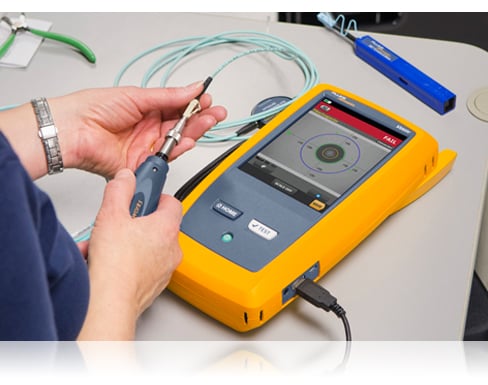
FiberInspector™ Pro를 이용한 광케이블 검사
검사에 의해 드러난 두 가지 일반적인 광케이블 문제
검사는 빛이 한쪽 종단면을 떠나서 연결 내부에 다른 쪽으로 들어갈 때 손실 또는 반사를 유발하는 두 가지 유형의 문제를 발견할 수 있습니다. 오염과 손상이 있습니다.
- • 분진, 오일과 습기 차단 젤은 광케이블 커넥터 종단면 오염의 대표적인 예입니다. 페룰을 만지기만 해도 종단면에 인체의 기름기가 묻어 연결 시 바람직하지 않은 감쇠가 발생하게 됩니다. 먼지와 정전기를 띈 작은 입자가 공기를 통해 들어와 노출된 종단면에 앉을 수 있습니다. 특히 건축이나 재건축 중인 시설에서 그렇습니다. 새로 설치한 경우에는 완충제와 풀링 윤활유가 종단면에 쉽게 묻을 수 있습니다.
- • 광케이블 손상은 긁힘, 구멍, 균열 또는 이빠짐 등의 형태로 나타납니다. 이러한 종단면 표면 결함은 불량한 종단 처리나 결합 오염으로 인해 발생할 수 있습니다. 먼저 모든 연결부를 결합한 다음 실패한 연결부만 검사하는 것은 위험한 접근 방식입니다. 결합한 커넥터의 물리적 접촉은 한 쪽 종단면에서 다른 쪽 종단면으로 오염을 전달하거나, 심지어 더 많은 비용과 시간이 소요되는 재종결 또는 사전 종단된 링크의 교체가 필요한 영구적인 손상을 야기할 수 있습니다.
광케이블 배선 작업 첫날부터 스테레오 벤치 탑 현미경을 사용하여 광케이블 종단면을 검사합니다. 세월이 흐르면서 소형 휴대용 현미경의 개발로 광케이블 테스트가 더 쉬워졌습니다. 현미경은 다음의 2개의 기본 유형으로 나눌 수 있습니다. 광학 및 비디오. 광학 현미경은 대물 렌즈와 접안 렌즈를 포함하고 있어서 기술자가 장치를 통해 종단면을 직접 볼 수 있습니다. 영상 현미경은 광학 프로브와 디스플레이를 사용하여 프로브의 영상을 보여 줍니다. 프로브는 접근하기 어려운 위치의 포트에 도달하도록 설계되었으며, 화면을 통해 이미지를 확장하여 오염 물질과 손상을 쉽게 식별할 수 있습니다. 종단면을 직접 보는 대신 화면에서 볼 수 있기 때문에 프로브는 사용자의 눈이 유해한 레이저 광선이 노출될 가능성을 최소화합니다. FI-7000 FiberInspector™ Pro와 같은 최신 테스터는 종단면 이미지를 광케이블 테스트 결과의 일부로 저장할 수 있으며 업계 표준에 따라 합격/불합격 표시를 제공할 수도 있습니다.
검사 결과 오염이 발견되지 않으면 청소가 필요하지도 권장되지도 않습니다. 오염이 발견되면 오염의 특성에 따라 세척 방법이 크게 다릅니다. 이러한 종단면을 올바르게 청소하고 있습니까? 광케이블 청소를 위한 몇 가지 모범 사례를 살펴보십시오.
Fluke 툴을 사용하여 광케이블 연결 및 케이블을 테스트하는 방법
다음 동영상에서 Fluke 툴을 사용하여 광케이블 연결 및 케이블을 테스트하는 방법을 확인하십시오.
광케이블 트랜시버 테스트 방법
SFP 및 QSFP와 같은 광케이블 트랜시버는 네트워크에서 일반적인 장애 원인입니다. 테스트에는 일반적으로 전력계 측정이 포함되지만, 많은 기술자들이 이러한 도구를 가지고 있지 않습니다. 많은 기술자들이 문제를 추측하고 트랜시버를 교체하면 링크가 다시 실행되는지 확인하는 것이 더 쉽다고 생각합니다. FiberLert 라이브 광케이블 탐지기는 추측을 배제하므로 문제가 있는 곳을 파악하는 데 시간을 낭비하지 않습니다. (광케이블 극성은 많은 혼란을 야기할 수 있습니다. 여기에 광케이블 극성 기본 사항에 대한 세부 정보가 나와 있습니다.)
이 트랜시버가 작동합니까? 추측은 그만하세요. FiberLert 라이브 광케이블 탐지기를 통해 확실히 확인하십시오.
광케이블에서 연결부 및 파손부를 찾는 방법
VisiFault™ Visual Fault Locator를 사용하여 간단한 광케이블 링크 문제를 신속하게 진단하고 수리하면 간단하고 비용 효율적인 방법으로 광케이블, 연결, 구부러짐 및 파손을 찾을 수 있습니다.
VisiFault는 빠른 광케이블 위치 파악 및 기본적 문제 해결을 위해 적절한 도구입니다.
Fluke Networks의 Fiber QuickMap™은 다중 모드 광케이블에서 연결부 및 파손부를 신속하고 효율적으로 찾아내는 더 진화된 엔터프라이즈 다중 모드 광케이블 문제 해결 도구입니다. 이 툴은 높은 손실 및 높은 반사율 등이 발생하는 고장 지점까지의 거리를 즉시 제공할 수 있습니다. 최대 9개의 이벤트를 표시하고 피트 또는 미터 단위로 길이를 표시할 수 있습니다. 이 동영상에서는 데모 상자에 끊어진 광케이블이 있습니다. Fiber QuickMap이 어떻게 문제를 빠르고 효율적으로 찾을 수 있는지 확인하십시오.
여기에 데모 박스에 파손된 광케이블이 있으며, Fiber QuickMap이 문제를 더 빠르고 효율적으로 찾는 데 어떻게 도움이 될 수 있는지 설명합니다.
광케이블의 오염을 검사하는 방법
종단면 오염이 광케이블 고장의 주 원인입니다. 오물, 먼지 및 기타 오염 물질은 광케이블 전송을 막고 트랜시버에 피해를 주는 삽입 손실과 역반사를 일으킵니다. FI-500 FiberInspector™ Micro 광케이블 검사 스코프는 광케이블을 설치하기에 좋은지 확인하는 데 도움이 됩니다.
FI-500은 사용하기 쉽습니다. 프로브는 좁은 공간에서도 작동하기 쉬운 조종 키를 갖도록 설계되었습니다.
광케이블 테스트 방법 및 손실 및 출력 수준을 측정하는 방법
올바른 툴을 사용하면 손실 및 출력 수준을 평가하고 연결부 종단면을 검사 및 청소함으로써 광케이블 배선 시스템 문제를 해결하고 검증할 수 있습니다. 기본 광케이블 검증에서 고급 문제 해결 및 검사에 이르는 모든 작업에서 SimpliFiber® Pro Optical Power Meter 및 Fiber Test Kits는 테스트 시간을 단축할 수 있는 편리한 고급 기능을 제공합니다.
SimpliFiber Pro는 고급 시간 절약 기능을 갖춘 사용하기 쉬운 광케이블 손실 테스터입니다. 검증, 검사 및 청소에 대한 필요를 만족시키는 다양한 구성의 키트 중에서 선택하십시오.

